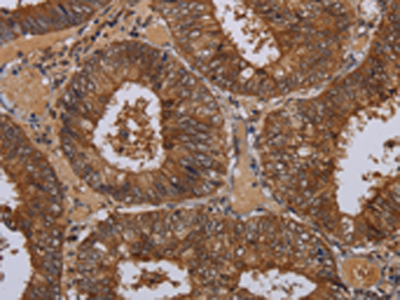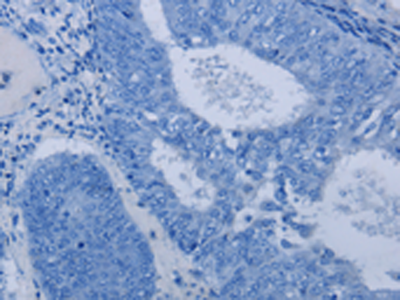| Cat.#: S217591 |
| Product Name: Anti-WDR83 Rabbit Polyclonal Antibody |
| Synonyms: MORG1 |
| UNIPROT ID: Q9BRX9 (Gene Accession – BC005870 ) |
| Background: This gene encodes a member of the WD-40 protein family. The protein is proposed to function as a molecular scaffold for various multimeric protein complexes. The protein associates with several components of the extracellular signal-regulated kinase (ERK) pathway, and promotes ERK activity in response to serum or other signals. The protein also interacts with egl nine homolog 3 (EGLN3, also known as PHD3) and regulates expression of hypoxia-inducible factor 1, and has been purified as part of the spliceosome. Alternative splicing results in multiple transcript variants. |
| Immunogen: Fusion protein of human WDR83 |
| Applications: ELISA, IHC |
| Recommended Dilutions: IHC: 100-300; ELISA: 2000-10000 |
| Host Species: Rabbit |
| Clonality: Rabbit Polyclonal |
| Isotype: Immunogen-specific rabbit IgG |
| Purification: Antigen affinity purification |
| Species Reactivity: Human, Mouse, Rat |
| Constituents: PBS (without Mg2+ and Ca2+), pH 7.4, 150 mM NaCl, 0.05% Sodium Azide and 40% glycerol |
| Research Areas: Signal Transduction, Cardiovascular, Epigenetics and Nuclear Signaling |
| Storage & Shipping: Store at -20°C. Avoid repeated freezing and thawing |

Immunohistochemistry analysis of paraffin embedded Human thyroid cancer tissue using 217591(WDR83 Antibody) at a dilution of 1/60(Cytoplasm or Nucleus). | 
In comparision with the IHC on the left, the same paraffin-embedded Human thyroid cancer tissue is first treated with the fusion protein and then with 217591(Anti-WDR83 Antibody) at dilution 1/60. | 
The image on the left is immunohistochemistry of paraffin-embedded Human colon cancer tissue using 217591(Anti-WDR83 Antibody) at a dilution of 1/60. | 
In comparision with the IHC on the left, the same paraffin-embedded Human colon cancer tissue is first treated with fusion protein and then with D222653(Anti-WDR83 Antibody) at dilution 1/60. |
|
